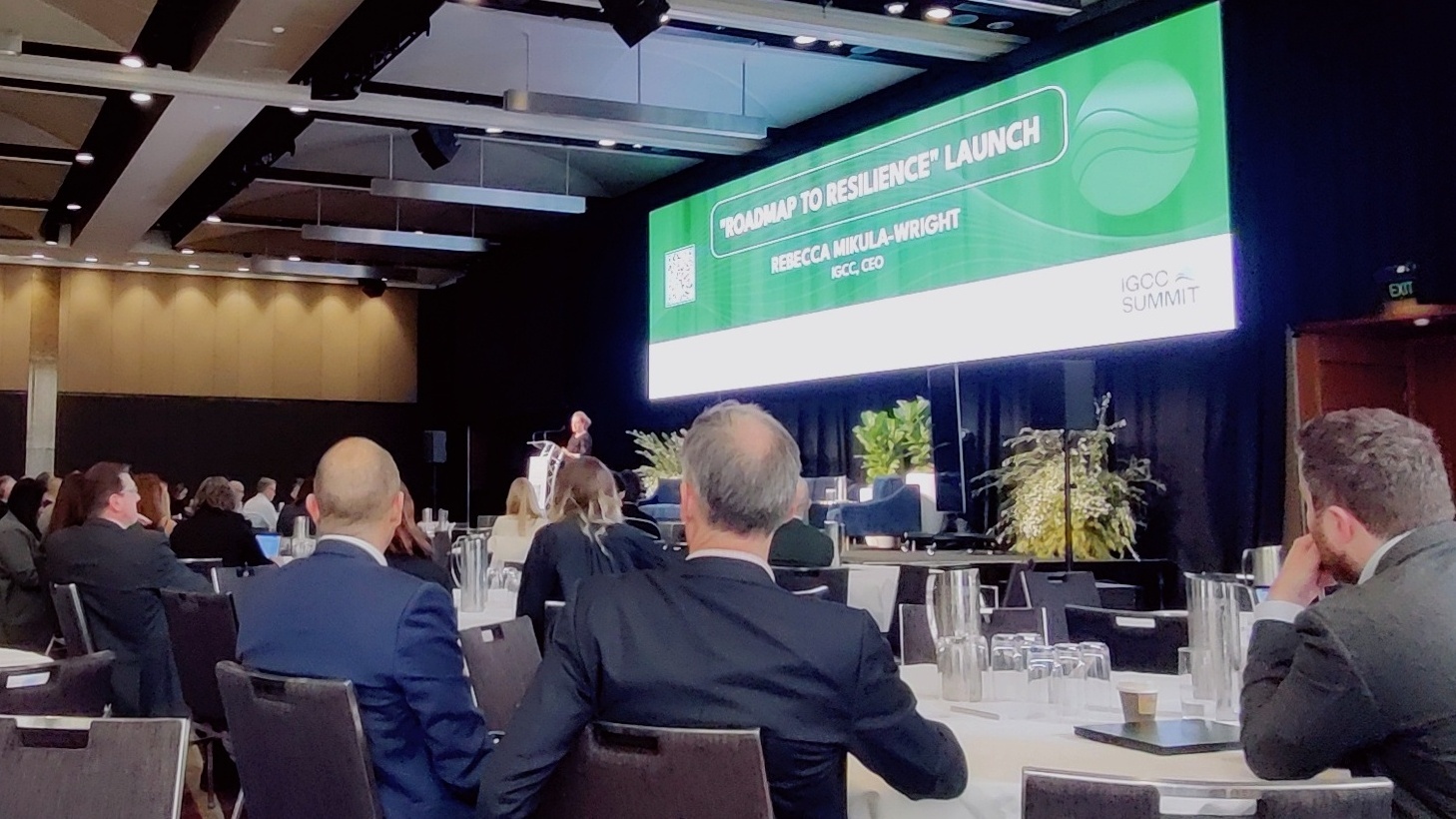
IGCC Summit: investors down under discuss the art of adaptation
The Investor Group on Climate Change (IGCC) annual summit put the spotlight on financing adaptation
To kick-off the final day of the Investor Group on Climate Change summit, IGCC CEO Rebecca Mikula-Wright launched the coalition’s physical risk strategy: “Road to Resilience”- a call to arms to understand, address and mitigate physical climate risk.
“Institutional investors cannot divest from climate risk”, she said.
IGCC members, investors from Australia and New Zealand focused their attention on the complex task of mitigating the physical risks of climate change.
A recent IGCC survey that covered 53 Australia-domiciled investors with $2.1 trillion worth of assets under management found that physical risk remains under-priced. Just 22% of respondents reported having a physical climate risk assessment in place.
Conversations at the conference shed light on three key reasons why a resilience plan matters for asset owners and vice versa:
The impacts of physical risks are often complex, regional and interconnected, which means that effective management and adaptation must be collaborative, dynamic and multidisciplinary
Shared understanding
Compared to mitigation finance, the world of adaptation finance is riddled with far from clear cut. What it entails and what it does not, has been subject to a wide range of perspectives.
A common strategy could play a similar role to a taxonomy: define concepts and build consensus. IGCC calls this “shared understanding”.
“The impacts of physical risks are often complex, regional and interconnected, which means that effective management and adaptation must be collaborative, dynamic and multidisciplinary”, the strategy says.
At the summit, the necessity and feasibility of private capital in adaptation finance seemed to be up for debate. Most participants agreed there was a role to play yet implementing ambition is far from simple.
Given the scale of the adaptation challenge in Australia and New Zealand, a “shared understanding” appeared pertinent. “Climate change is a team sport”, as one participant quipped.
This [physical risk] is a systemic risk that requires a systemic response

Money to be made
When Senator Jenny McAllister, Australia’s assistant minister for climate change addressed the summit, she noted the importance of understanding physical risk.
“This [physical risk] is a systemic risk that requires a systemic response”, she said.
Senator McAllister went on present an important fact to the audience – an overwhelming portion of adaptation finance has historically come from the public purse.
A common misconception of “no money to be made” in adaptation, she opined, was one of the key barriers.
The IGCC physical risk strategy aims to break such myths.
“By shifting sufficient private capital towards initiatives focused on adaptation and resilience, investors can secure their established assets, unlock new investment opportunities and safeguard the long-term financial wellbeing of their beneficiaries”, the strategy reads.
Crystal Fleming, chief of partnerships and impact at the Resilient Building Council echoed this sentiment.
“Two million homes in Australia are not resilient to disaster”, she said. Which according to Fleming is a multi-billion dollar investment opportunity.
We know their [infrastructure assets] resilience is more than just a good investment decision, it’s a societal need
Risky business
The strategy noted, on multiple occasions, the fact that Australia’s corporates and communities are particularly vulnerable to physical risks. The economic costs incurred by Australian critical infrastructure providers during the “black summer” – a period of intense bushfires in 2020 was a reminder of that reality.
In addition to the asset risk, the report stressed that Australia’s asset owners have a fiduciary responsibility to address physical risks given its links with members long-term financial well-being.
For instance, exposures to infrastructure assets are distinctly vulnerable to physical risks. However, these assets are also critical to the well-being of wider communities.
“We know their [infrastructure assets] resilience is more than just a good investment decision, it’s a societal need”, says Andrew Sellick, principal – sustainability at QIC, an investment manager.
While investors remain divided on the scope of a shared adaptation strategy, the debates at this week's IGCC summit will have played a key role in pushing the item up on their agenda.




